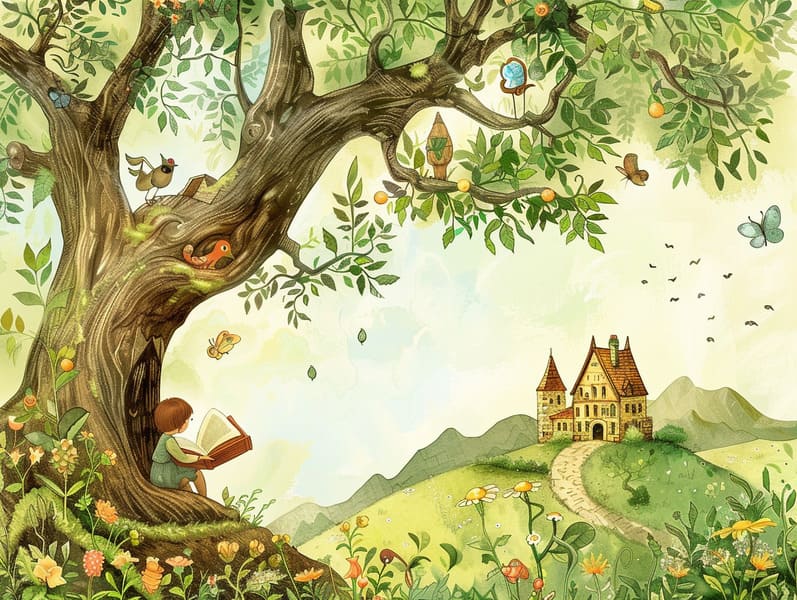The Journey of Classic Fairy Tales with the Unfading Magic.
The Journey of Classic Fairy Tales with the Unfading Magic.
Blog Article

Traditional fairy tales have enduring presence. These tales have been shared from one generation to the next well before they were ever transcribed. They originated from a variety of traditions, including Indigenous traditions. They were initially shared among adults, often carrying themes and messages aligned with the societal norms and beliefs of the time.
The renowned Brothers Grimm, Jacob and Wilhelm (the Grimm brothers), were among the first to compile and release many of these beloved fairy tales. Their collection, "Grimm's Fairy Stories," included stories like "The True Bride," "Little Brother and Little Sister," and "The True Story of Snow White," which have since become cornerstones in the world of traditional fairy tales. Similarly, Andersen's imaginative stories, such as "The Little Mermaid," and "The Duckling's Story," have captivated hearts worldwide, cementing their place in the pantheon of iconic fairy tales.
Though they are centuries old, fairy tales remain as applicable as ever, especially as children's night stories. These whimsical stories are now available in diverse formats, including beautifully illustrated books, whimsical animations, and online storybooks.
Their continued relevance can be ascribed to several fascinating points:
Significant Morals: Timeless fairy tales often illustrate important moral lessons. Stories like "The Boy Who Cried Wolf" teach the virtue of sincerity, while "The Tale of the Tortoise and the Hare" show the virtues of determination and humbleness. These tales offer kids clear distinctions between right and wrong, shaping their moral compass in a gentle yet profound way.
Empathy and Understanding: Timeless fairy tales frequently illustrate heroes facing tests and troubles, encouraging readers to connect with their struggles and celebrate their triumphs. For instance, "Beauty and the Beast" illustrates the necessity of seeing beyond looks to recognize the inner core of a being, promoting warmth and comprehension.
Cultural Understanding: Many traditional fairy tales are rich in the cultural contexts from which they were born. Discovering these fairy tales can provide enlightening views into different heritages, promoting a sense of global understanding and comprehension.
Inventiveness and Fantasy: The mythical elements in fairy tales—supernatural elements—encourage children’s innovative ideas. These tales move readers to magical realms, engendering fantastical thinking and a sense of mystery that endures a lifetime.
Old fairy tales are not only fantastical but also educational. They serve as spellbinding tools in nurturing various thinking and feeling skills in young ones. When timeless fairy tales are spoken out loud, they foster communication skills by bringing new terms and detailed sentence structures. This practice also promotes hearing abilities and mindfulness, as little ones pay close attention, keen to see what happens next.
Furthermore, discussing the themes and characters of ancient fairy tales can develop logical thinking and logical thinking. Children are guided to find patterns, foresee events, and know cause and effect. These analyses also encourage kids convey their thoughts and feelings, nurturing their emotional intelligence.
In today’s online age, the prevalence of internet fairy tales has made these stories more accessible than ever. Web platforms and software extend vast collections of children's fairy tales that can be seen or listened to anytime, anywhere. Fairy tales spoken are particularly widespread, providing an interactive way for young readers to experience these mesmerizing stories. Read-aloud books and read-to-me videos lead characters and awesome site settings to life, often paired with enchanting music and songs that enhance the narrative experience.
The timeless charm of timeless fairy tales lies in their ability to adapt to present days while preserving their central messages. Contemporary modernizations of these narratives often show more diverse characters and modern settings, making them relevant to today’s audience. However, the main ideas of bravery, kindheartedness, and even-handedness remain unchanged, continuing to move audiences of all ages.
Ancient fairy tales also offer a sense of security and recognition. They impart upon a well-arranged narrative with a obvious beginning, middle, and end, often closing with the culmination of conflicts and the triumph of righteousness over wickedness. This consistency can be calming for young readers, granting a sense of security in an always shifting world.
Timeless fairy tales continue to enchant and teach new generations, maintaining their allure and significance in modern society. As kids' bedtime tales, they render a perfect blend of fascination and comprehension, fostering moral values, empathy, and creativity. The presence of digital fairy tales and the well-liked nature of fairy tales spoken confirm that these timeless tales remain obtainable to new generations.
By conserving and spreading these tales, we continue to esteem the rich tapestry of cultural legacy and cultural heritage. Whether you are delving into a vividly illustrated book, browsing a electronic library, or hearing an sound book, the allure of classic fairy tales is always within reach. These stories show us of the consistent power of storytelling and its ability to bring us together across epochs and places.
Even if you are seeing a colorful picture book, perusing a digital library, or playing an read-aloud book, the magic of famous fairy tales is always within reach.
These fairy tales convey of the endless presence of fairy tales and its ability to bind us across eras and regions, casting a charm that delights and instructs alike.